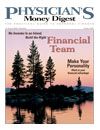Publication
Article
Physician's Money Digest
Looking Beyond the Aesthetics of Art Funds
Author(s):
BusinessWeek
When you're hot, you're hot, and accordingto a recent article in , art isabout as hot as it gets. Not surprisingly,financiers are looking to do the same for art as theydid for real estate investment trusts back in the1960s—turn it into a mass-market asset class. Plansare in the works for the development of a dozen artinvestment funds during 2005. Minimum accountsare figured to start around $250,000, but it's anticipatedthat the cost of entry will eventually be loweredto $50,000. But as the article points out, subjectivevaluations and steep costs combine to make art investmentfunds seem a bit risky.
Financial Renderings
BusinessWeek
Ongoing lackluster returns on stocks and bondsare the driving force prompting many high-net-worthinvestors to look closely at art funds, and they arecertainly worth a look. According to ,the Mei/Moses Annual All Art Index shows a 50-year compound annualized return of 10.4% comparedwith 10.9% for the S&P 500 and 7.2% vs-2.4%, respectively, from 1999 through 2004.
Art funds, though, are nothing new. The articlenotes that in the mid-1970s, British Rail PensionFund put $100 million, or 2.5% of its portfolio, intoart. Amassing a substantial collection of 2400pieces, from Chinese porcelains to African tribal art,the fund had an annual compound return of 11.3%.But the fund was spread too broad, and eventuallysold off all of its art.
Sponsors of the Fine Art Fund, the largest of thenew ventures, say they will avoid the problems of thepast by purchasing no more than 500 works in fourcategories: old masters, contemporary, modern, andimpressionism. Investors' money will be locked upfor the fund's 10-year life, and it's anticipated thatprofits and capital will be distributed beginning inthe third year. The fund also plans to generateincome by allowing its investors to rent works valuedat up to 3 times their investment.
Subjectivity and Value
One of the biggest concerns that skeptics have ofthe new art funds is the subjective nature by which artis valued. According to the article, all the funds saythey will provide investors an annual statement witha professional appraisal valuing the art included intheir portfolio. But experienced auctioneers point outthat it's impossible to determine what a piece of art isworth until it is sold. That subjectivity is keepingmany would-be investors from rushing into the fray.
Critics of art funds also note that art indexes canbe misleading. Considerable auction house transactioncosts—normally both buyer and seller premiumsof 10% or more—are not taken into account. In addition,most analyses of the art market only account forart sold at auction, omitting private deals.
According to the article, demand for art isextremely subjective, and driven largely by a handfulof collectors and dealers who determine what's hotand what's not. Liquidity in the art market is limited,and prices go down as well as up. A painting byRenoir, "A Young Woman Bathing," sold at auctionfor $11.3 million in 1997, then drew only $7.3 million7 years later. That is quite a bath.
The lines are drawn. Art fans say it's just a matterof time before art funds truly catch on. Critics are notso certain, and just as they would while walkingthrough a museum, they're taking a look-but-don't touch.
